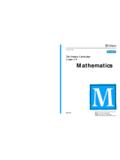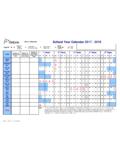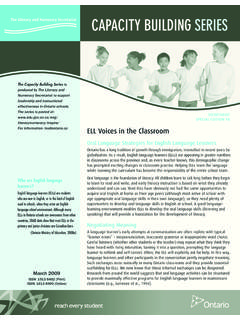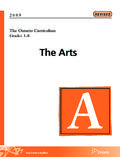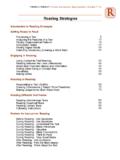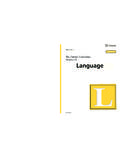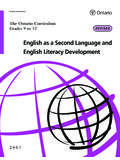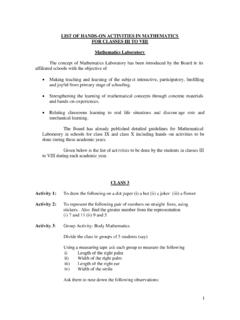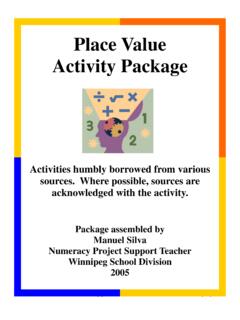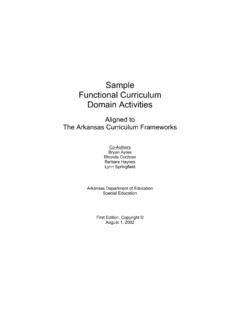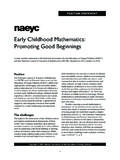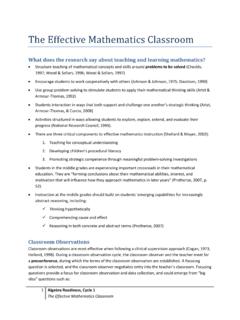Transcription of Writing Strategies - Ministry of Education
1 THINK LITERACY: Cross-Curricular Approaches, Grades 7-12 Writing StrategiesReviseWWWWWI ntroduction to Writing StrategiesGenerating Ideas:Rapid WritingSetting the Context (What Do My Readers Want to Know?)Adding Content (Pass It On!)Developing and Organizing Ideas:Webbing, Mapping and MoreSupporting the Main IdeaAdding DetailsRevising and Editing:Reorganizing IdeasAsking Questions to Revise WritingPeer EditingProofreading Without PartnersWriting for a Purpose:Using Templates: Writing a ProcedureWriting an Information ReportWriting a Business ReportWriting an ExplanationPosters for Instruction: WritingGenerate IdeasOrganize WritingRevise and Edit981021041081121181241281321361401421 44147148 THINK LITERACY: Cross-Curricular Approaches, Grades 7-12 WWWWWI ntroduction to Writing Strategies97 Students learn to write by Writing .
2 They need regular opportunitiesat school to write in all subjects. A consistent approach to thewriting process in all subject areas and explicit instruction on thewriting process by the subject teacher help students becomebetter writers. Models of good Writing in the subject area, andfeedback that is constructive and formative, are critical tostudents growth as writers. GenerateIdeasRevise &EditDevelop &OrganizeThe WritingProcess Struggling writers need: regular, meaningful opportunities to practise Writing in subject-specific contexts. teachers who model the Writing process and demonstrate its usefulness. opportunities to talk about their Writing .
3 Prior knowledge about language, subject content, and the world. knowledge of different Writing forms and their characteristics. expanded sight vocabularies for subject-specific Writing . Strategies to become independent writers in any ConsistencyStudents are sometimes confused by differences in Writing requirements from subject to subject withinthe same school. Although different subjects require different types of Writing assignments, all writingcan follow the same process. By adopting a consistent Writing process across all subject areas,teachers ease some of the stress associated with Writing , and help students build confidence and skillas Writing ProcessThe Writing process involves generating ideas, developing and organizing the ideas, and revising andediting them.
4 Effective writers cycle through these stages until they are satisfied that the writingachieves its IdeasIn all subject areas, students need to develop skills for getting what they know about a topic downon paper, and generating ideas or finding additional facts. They also need skills to check whethertheir Writing is on-topic and fulfills its purpose. Further, they need to be able to explain the writingassignment and the process they are following to effectively complete the and Organizing IdeasStudents need to know how to organize what they have learned about any topic or assignmentinto a well-structured whole. In longer Writing assignments, they need to know how to create astrong, focused introduction that catches the reader s interest; how to link ideas in logicallyconnected paragraphs that contain enough supporting detail; and how to conclude with a and EditingStudents need individual and group skills to assess their own work and the work of others forcontent, clarity, form and style, and for errors in grammar, punctuation and spelling.
5 Ultimately,students have individual responsibility for the accuracy of their work, but they need to know howto help each other LITERACY: Cross-Curricular Approaches, Grades 7-12 WWWWW98 Generating Ideas: Rapid WritingWhen students engage in rapid Writing at the beginning of a Writing assignment, they access their priorknowledge, engage with content, review and reflect, and begin to set direction for Writing letters,essays, and other subject-based Help students to start Writing and ultimately to produce more Writing . Encourage fluency in generating ideas for Writing on any topic, in any subject area. Help students begin organizing will: rapidly generate fresh ideas about topics in any subject area.
6 Write down ideas without self-editing. generate raw material for more polished work. complete Writing activities on time, overcome writer s block, and improve test-taking and Resources This strategy may be used in a number of ways, including: prewriting; brainstorming for a specificquestion; or Writing for reflection, learning logs, mathematics journals, work journals, etc. This strategy may also be used as a pre-reading strategy, similar to a KWL. Use this strategy to review what students remember about classroom work. Use rapid Writing regularly in the classroom, and have students select the day s topic. Possibletopics might include analyzing a science hypothesis, discussing proof for a mathematics wordproblem, or developing an opinion on a history or geography topic.
7 Students can apply this strategy when Writing tests or examinations, by scribbling down information they are afraid of forgetting just before they begin responding to the questions. Use the rapid Writing drafts to give students practice in proofreading and reviewing their Writing forflow of ideas. When students use this strategy at the computer with the monitor turned off, theywill be amused by how many errors in proofreading they have made. Be prepared for somelaughter in the classroom when using this approach. See Student/Teacher Resource, Tips for Rapid Support Write the topic on the board, and do not repeat it orally if a student comes in late. Instead, point atthe board.
8 This also reinforces the topic for visual learners and for students who have poor auralmemory. Encourage students to use the rapid Writing strategy to overcome anxiety for tests or assign-ments. Use timed Writing for parts of a task - , as many words as possible in three minutes, then asmany more as possible in the next three min, etc. Vary criteria: some students may need to work in point form, or stop and break after threeminutes. Save completed rapid Writing samples to use later to teach Writing conventions or organization ofideas. Vary the amount of time you give to students. Post the topic-related vocabulary in the classroom as an aid for struggling LITERACY: Cross-Curricular Approaches, Grades 7-12 WWWWW99 Generating Ideas: Rapid WritingNotesWhat teachers doWhat students doBeforeDuringAfter Plan a topic for rapid Writing or invite thestudents to suggest topics.
9 Explain that the purpose of rapid Writing isto allow students to record what they knowabout the topic, subject, or activity, withoutworrying about repetition, spelling,grammar, or any other errors. Give directions for rapid Writing . SeeStudent/Teacher Resource, Tips for RapidWriting. (Optional) Suggest topics for rapid Writing thatare related to the subject of study. Give directions. See Student/TeacherResource, Tips for Rapid Writing . Give the signal to begin. Time the students. Give the signal for students to stop Writing .(You may want to give them a one-minutewarning.) At the starting signal, write or type as quicklyas possible without stopping or making anycorrections.
10 Debrief. Ask students to count the number of wordsthey have written. Ask who has at least ___ words, until onlyone or two hands remain up. Discuss the topic, based on what the stu-dents have written. Encourage students whodon t usually participate. Focus the students attention on how theirrapid Writing can be the starting point formore polished pieces. Alternatively, as a follow-up direct studentsto begin classifying and organizing theirideas. Alternatively, organize students into smallgroups to share their rapid Writing and tocompose a short collaborative paragraph onthe topic. Count and record the number of words. Discuss the topic by reading aloud parts ofwhat they have written.
